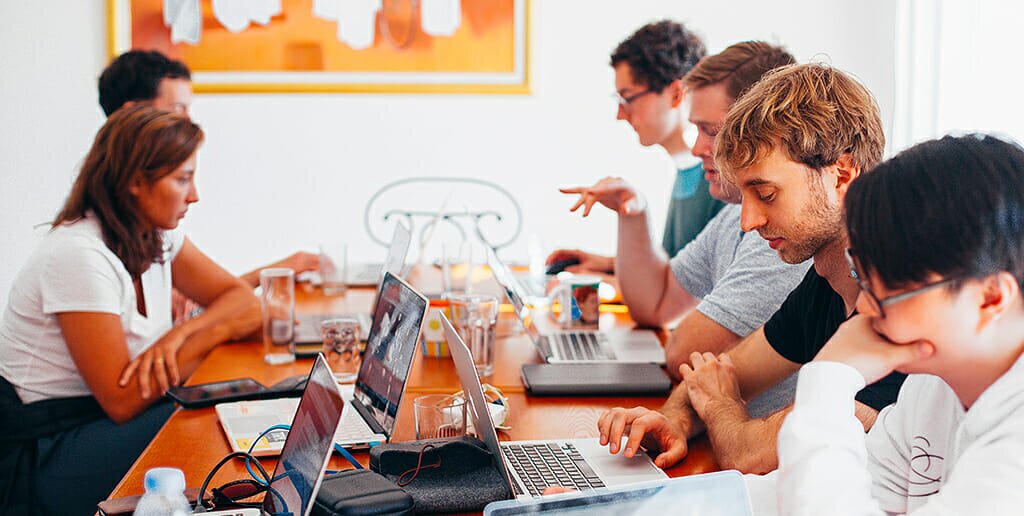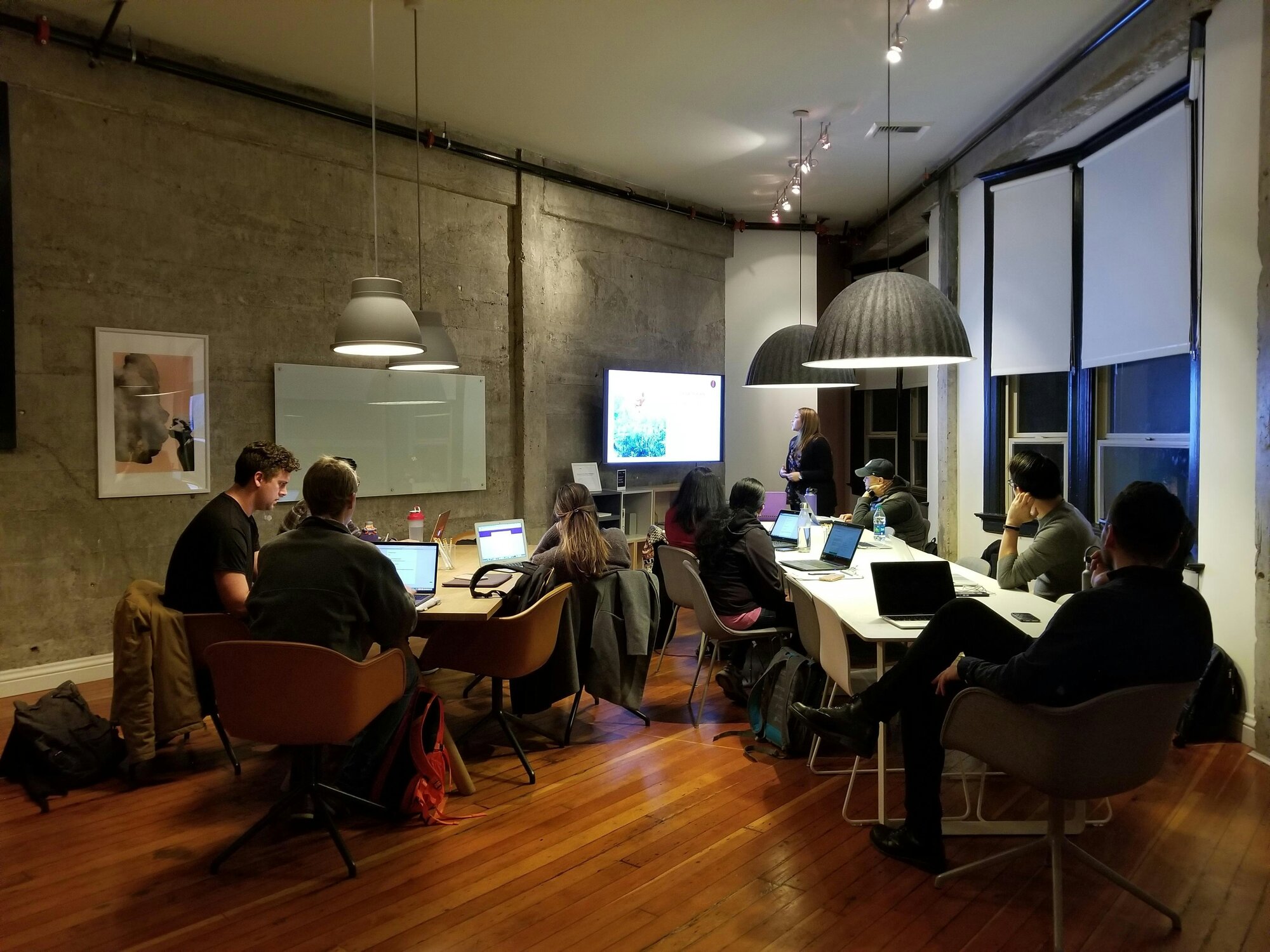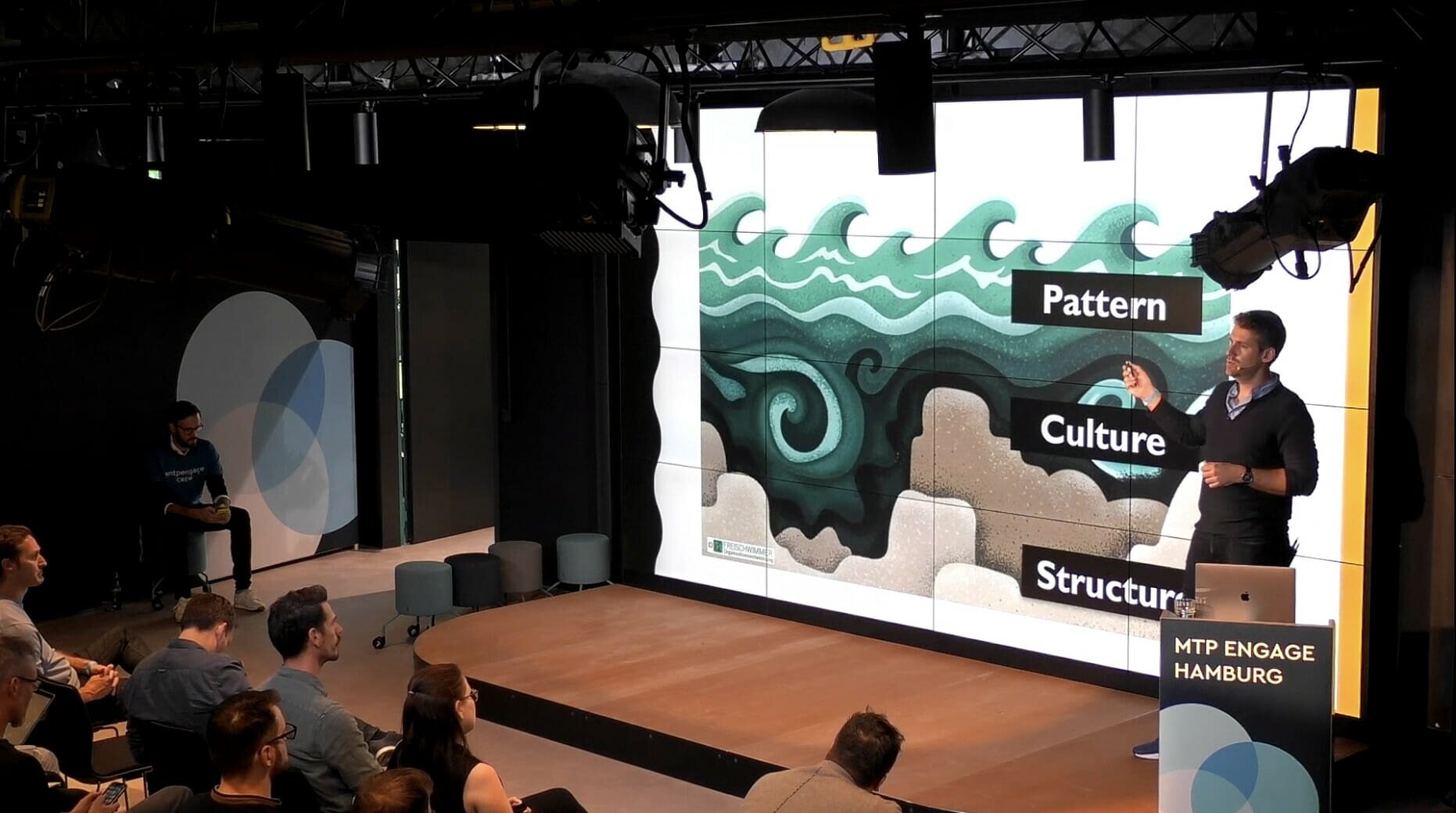Your sole role as a product manager is essentially problem-solving. To help you with facing different challenges and your day-to-day activities, several methods exist, such as supervision, case discussions and studies, or team meetings. Intervision is also one of them. Here at dualoop, we value it tremendously because it puts the community and collaboration at the centre. How can you collaborate differently using intervision? Let’s dive into it!
What is it exactly?
The intervision method is a form of peer learning that helps create a safe and reflective space amongst teams to tackle a common challenge or problem. You’re learning from your colleagues. Using intervision develops a learning culture in the organisation.
We could call intervision a form of reflective group supervision. Intervision differs from supervision in the hierarchy and the level of exchange between professionals. Supervision consists of training others and seeing them and their work from above. Intervision, on the other hand, is learning from others and seeing them and their work from within, together and mutually. Terms such as peer learning, peer assistance, group supervision, etc. are also used to refer to intervision. This activity is usually performed by four to six people.
Intervision is a peer-led method that doesn’t require an outside expert. All participants are employees, on the same level, and participate in sessions that aim towards helping each other understand and solve a problem. At the end of every intervision, participants find new and helpful ways of addressing an issue in the work context or space. Their issue could be about conducting better usability testing or how to set roadmap priorities without feedback, for example.
Read about strengthening collaboration between business and product.
Process of intervision: How does it work?
Before starting to apply the intervision method, it’s essential to be sure of the diversity amongst the group and the contribution of different and various perspectives. It’s key to a successful intervision. Respect and curiosity are crucial. The goal is to learn from each other and exchange ultimately. The differences amongst the group such as culture, ethnicity, race, age, experience are what makes intervision so interesting. Therefore, mutual respect is essential.
Now that the basic needs for a successful intervention have been explained, how does one intervention session actually take place? Each intervision has it’s own particularities. However, the following general steps will guarantee your intervision session to be successful.
During each intervision session, each participant is required to bring an ongoing issue to be discussed during a specific time.
- First, one designated participant, referred to as the case presenter or issue owner, thinks of a problem or a challenge in advance and agrees to present the situation.
- Following that, the case presenter presents the situation. What’s the challenge they’re facing? What was the problem? What happened during their experience? How did they feel, and how did they try to face it?
- After the presentation, the reflecting team asks questions to clarify their understanding of the problem. The reflecting team gathers, without the presenter, to brainstorm, discuss, and share their insights regarding the problem. The goal is to come up with solutions and suggestions regarding the problem.
- The group then creates a summary of their reflection and recommendations while the case presenter listens and takes notes.
- The intervision finishes with the case presenter’s briefing: what they heard, how they value these recommendations, and how they’re going to implement them to solve the problem.
These guidelines featured on UNODC are very helpful in providing a deeper look at the intervision process.
Tips and recommendations for a successful intervision
Here are some quick tips to ensure the success of your intervision sessions:
- Diversity in the group: The composition of an intervision team is very important to assure innovative thinking. Diversity amongst the group is essential. However, the group also needs to have a lot in common so they can relate to the problems each of them faces.
- The goal of intervision is to create an open and non-judgmental space where all views and statements are accepted. An open mind to others’ ideas is key to innovation.
- Relevant issue: The case presenter has to come up with a real issue they face, and have a hard time coming up with a solution on their own.
- Focus on problem-solving: Intervision helps with solving challenges and getting things done. At the end of every intervision, the case presenter has an idea of how to tackle their problem.
- Fixed intervision groups: Having regular intervision meetings with a fixed group will allow this group to connect and develop a sense of team spirit. This will help them learn from each other.
- Importance of time allocation: It’s very important to let everyone have their time without being interrupted.
- Everyone needs to add something: Be mindful of participants who have not spoken and invite them to share their thoughts on the subject.
Benefits of using intervision
- Enhanced professional capability: Sharing their expertise to come up with new ideas and address challenges they face in their everyday lives helps participants develop and better their skills.
- Emotional impacts: Intervision has been shown to reduce the risk of burnout because of the emotional support shown during a session of intervision. Participants feel heard, which will result in feeling more valuable and increase their desire to invest in themselves professionally. This will have a positive impact on their productivity.
- Social impacts: Intervision is a social activity. It provides a platform for enhancing social networks and exchange among colleagues. It helps the stakeholders feel like a part of the organisation and creates a stronger connection and link with their peers. Mutual help leads to stronger professional solidarity in the team.
- New perspectives: Sharing during an intervision helps participants broaden their understanding and perspectives regarding different issues they may tackle.
- Skills development: skills such as improvement in communication, active listening, empathy, creative thinking and problem solving, analysis, collaboration, professional networking, etc.
Explore the culture of burnout in product teams by reading this post.
Why would you use it?
Intervision helps create solidarity amongst a group and brings awareness of one’s capability to learn from experience. It promotes the idea that participants can learn from each other, not only from an outside expert. The mindset behind the process of intervision is based on a feeling of belonging to a group and contributing to the team’s common purpose.
Does it actually work?
Our loopers state intervision has helped them a lot. They bring a new issue to the table every two weeks and discuss various issues. For example, they discuss revising their objectives, what techniques to use to tackle a specific problem, how to improve user testing, and what better methods to use to get data, amongst many others.
They have 60 minutes to present their problem and brainstorm as a group to find solutions. Their expected outcome is a better-framed problem with 1 or 2 recommendations to take action.
With the help of an intervision, our loopers get direct feedback from their peers to attain their goals and solve their problems. They get recommendations tailored to their need and they’re able to implement them in their everyday lives.
Give it a try!
Now you’re ready for your first intervision session! If you want to learn from each other and solve problems you’re facing professionally, intervision is one of the efficient ways to go. It’s only a few easy steps to follow. Supervision, team meetings and case discussions exist as well. However, intervision allows the team to have a safe space. You learn from each other whilst enforcing your connection with your peers.
The personal and professional benefits you can reap from implementing intervision in your organisation are numerous. If your company doesn’t do intervision sessions, suggest the idea of doing one. It will be highly beneficial in the long run. Getting regular opinions and feedback from your peers can lead to innovation in your company.
If you’re interested in learning more about everything product, follow us on LinkedIn or visit our website.









